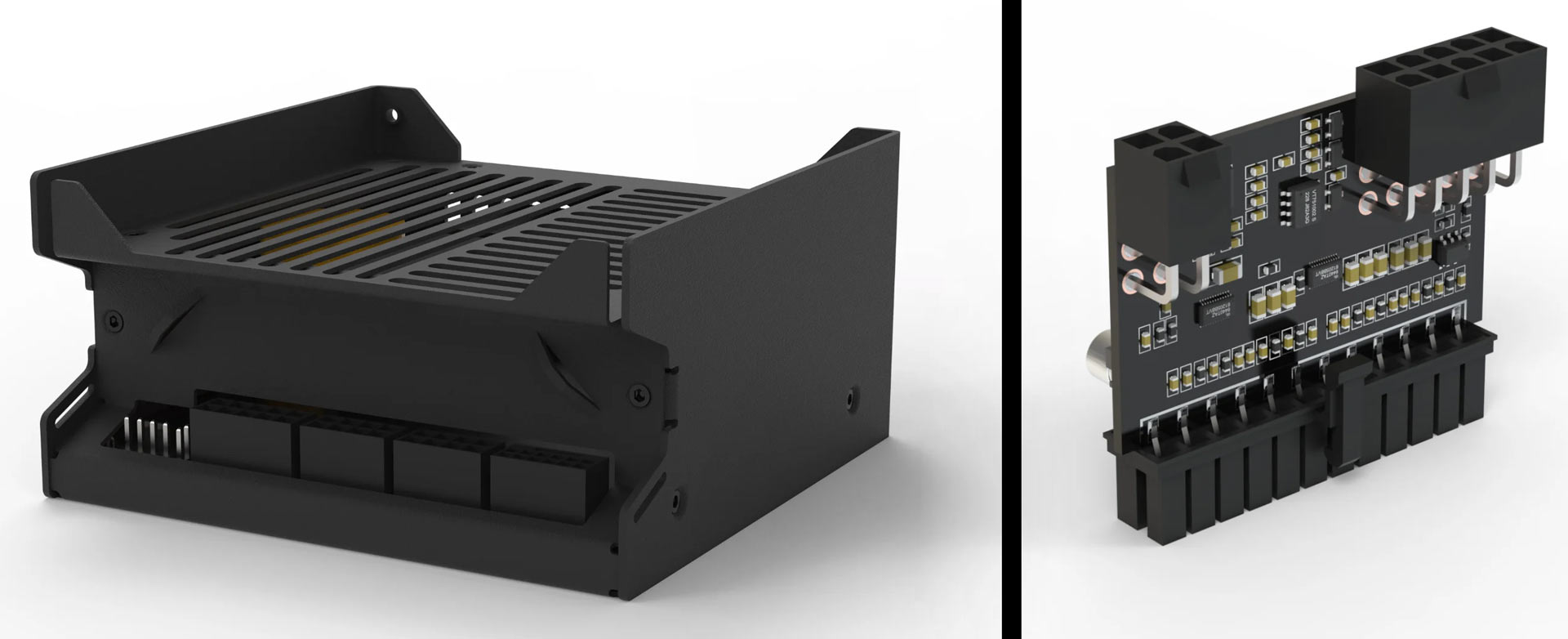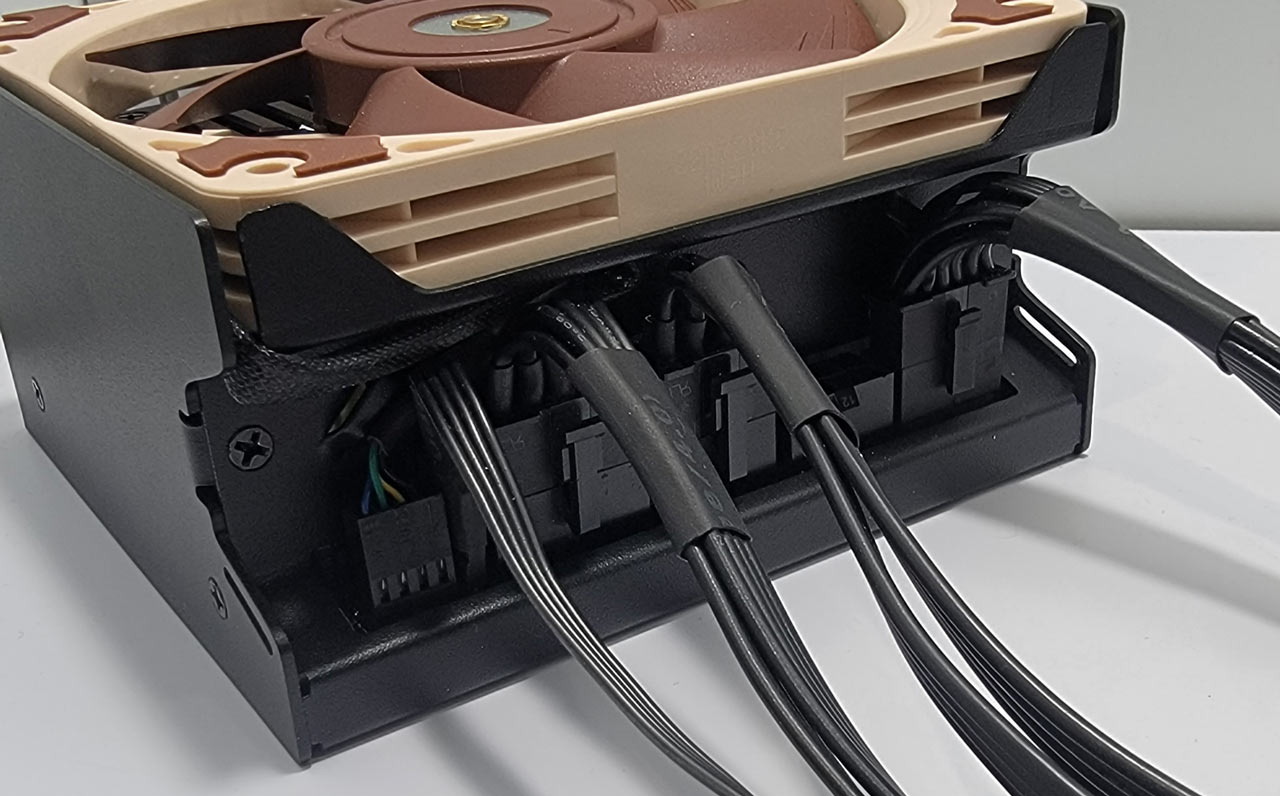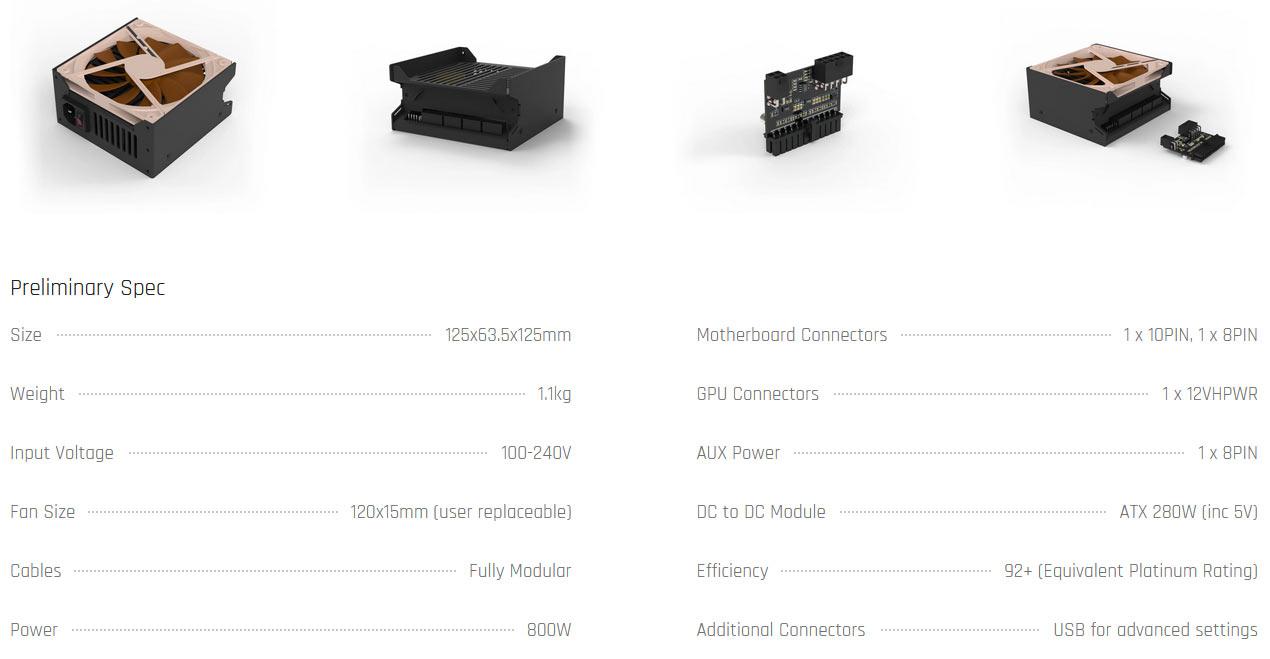Streacom ZS800 Rethinks PSUs for SFF Builds
Comprehensive redesign reduces cable protrusion issues and user choice of 120mm cooling fan.
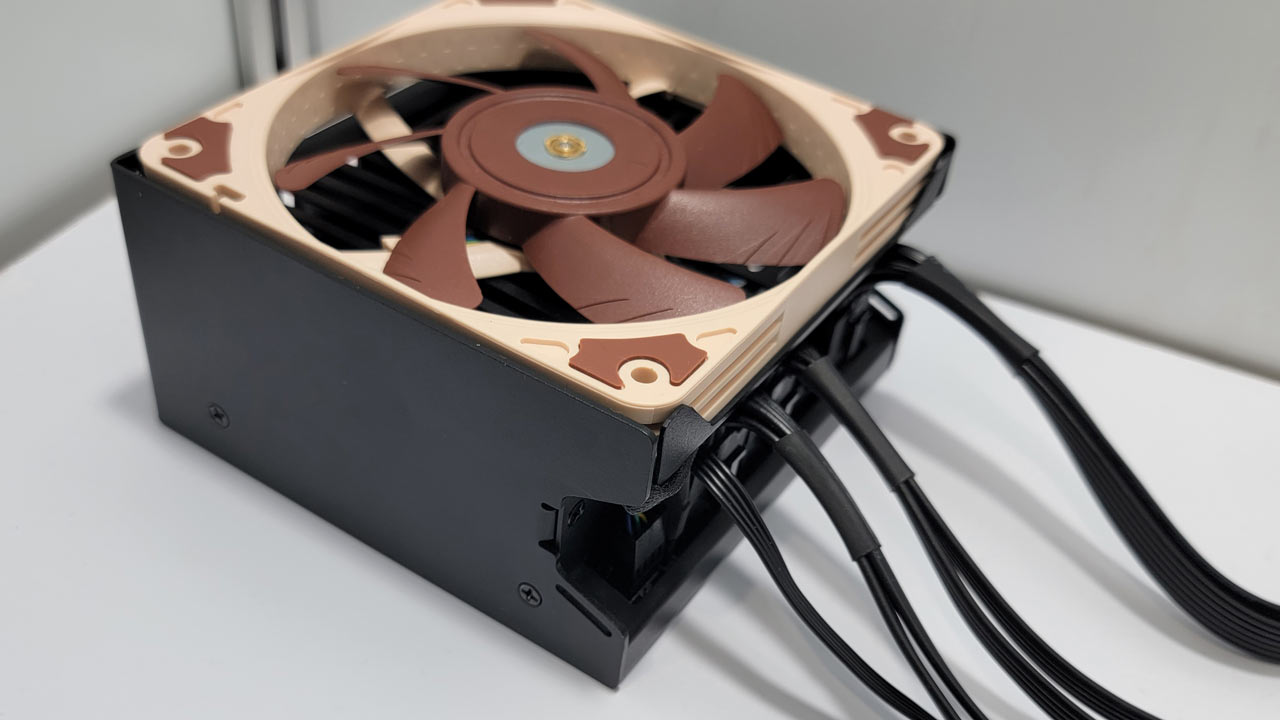
At Computex, Streacom showcased a new take on power supply design for small form factor (SFF) builds. Its new ZS800 Hybrid SFX PSU (800 W) tackles traditional SFF PSU design from a number of angles, and its experts at Computex have been revealing the reasoning behind its decisions.
The Streacom engineers seemed to have a wish list for modifying SFF PSUs before they started, and one of the first things they wished to improve was cabling. The issue of the bulky 24 pin ATX cable was considered first. Streacom says that its experience with DC to DC ATX converters meant that it could deliver multiple voltages from a single 12V supply. When Intel introduced its single-rail ATX12VO (12V only) specification, Streacom designed a hybrid solution that is both ATX3.0 and ATX12VO compatible.
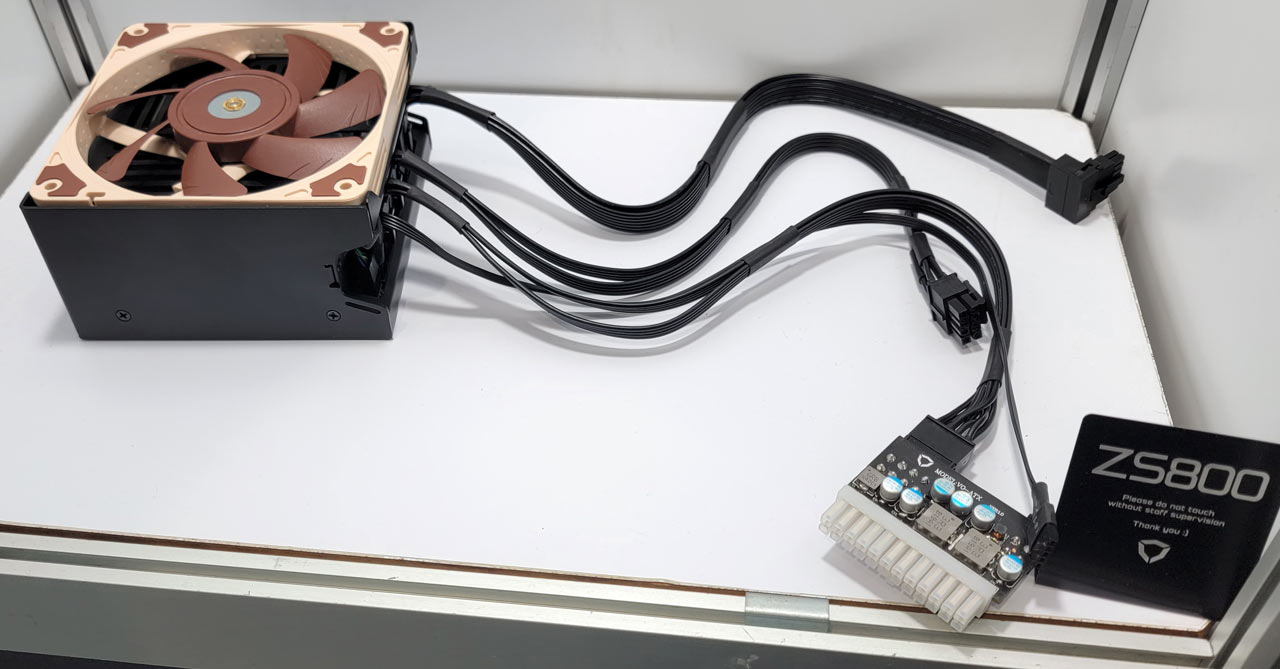
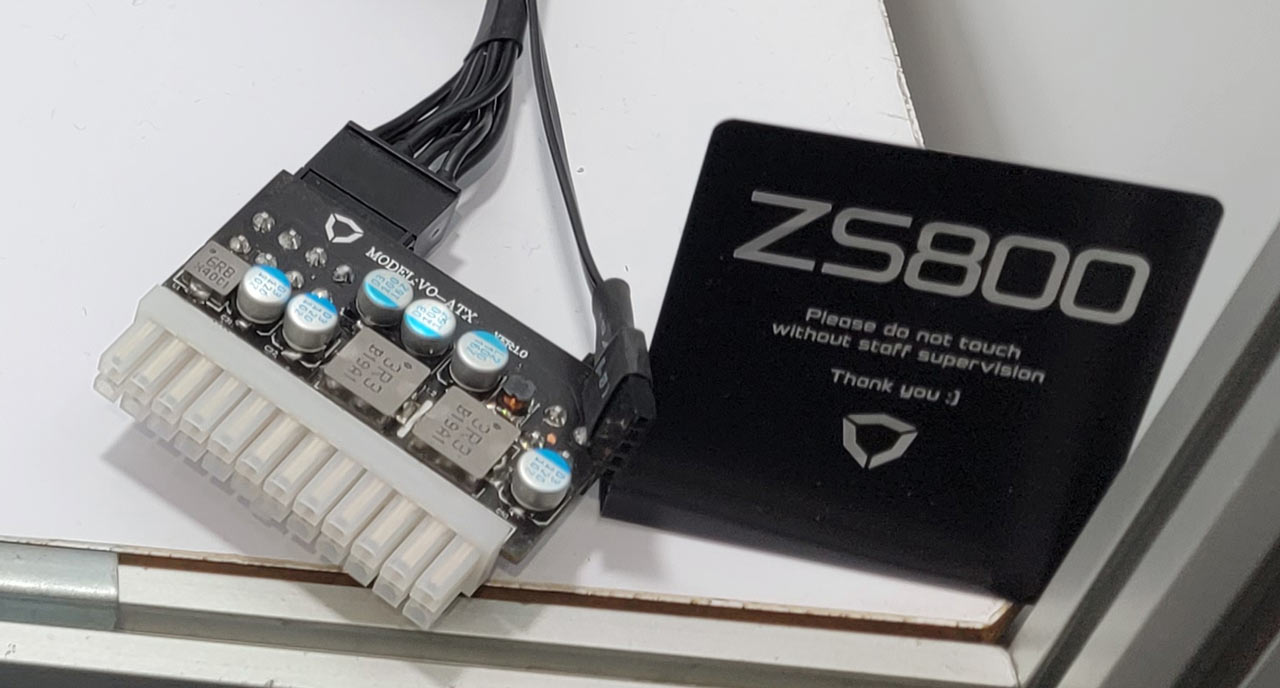
You can see the 24-pin ATX conversion cable is attached, and an official close-up shot of the DC to DC converter board is embedded below. Streacom mentions that the board is designed specifically for its PSUs, so owners of other brand ATX12VO supplies shouldn't think about acquiring one to supply lines with different voltages. Lastly, on the topic of this aspect of the design, Streacom says that users of its ZS800 Hybrid SFX PSU will hopefully be able to discard this adaptor, when / if ATX12VO is adopted by more motherboard vendors.
Another new aspect of the ZS800 Hybrid SFX from Streacom is its physical form factor. The firm mentions that the SFX standard specifies a PSU size of 125 x 63.5 x 100 mm - but once a user starts adding cable a lot of extra depth is needed for cable wrangling (probably about 20 to 30mm). You can see in our images that the recessed design of the ZS800 angles the connectors at 90 degrees, helping a lot in the most compact systems. We reckon cables attached to this PSU would need little more than the cable thickness for successful routing.
Apparently the cabling change also allowed Streacom to design-in a removable fan. The company claims that the ZS800 "is the first SFX PSU that allows the user to replace the fan with one of their choosing to create a perfectly matched system." We have images of the unit with and without a 120mm fan installed for your perusal. Streacom seems to have gone for a Noctua fan, but users could easily choose any standard 120 x 15 mm fan from their preferred brand - and go RGB if they wish.
If you are more than just interested in the Streacom ZS800 Hybrid SFX, please check out the official specs. Among the specs, you will note it comes with a 12VHPWR connector which is popular with modern Nvidia GPUs.
Yesterday we wrote about the Streacom SG10 fanless gaming case and the Streacom VU1 dynamic analogue dials in our coverage from the halls of Computex 2023.
Get Tom's Hardware's best news and in-depth reviews, straight to your inbox.

Mark Tyson is a news editor at Tom's Hardware. He enjoys covering the full breadth of PC tech; from business and semiconductor design to products approaching the edge of reason.
- Paul AlcornEditor-in-Chief
-
Lucky_SLS I am guessing the USB connection is for power draw, voltage monitoring and controlling the fan curve as per power load.Reply
Will this fit with the same SFX mounting slot or something different? -
BillyBuerger Now this is something interesting. The replacable fan should be able to be implemented in ATX PSUs as well, not just SFX. And designing it as 12VO with an adapter to allow it to work with ATX systems is also a nice setup. Although I would prefer if the converter was standard and not proprietary but I'm sure there are reasons. But if they did a good job with it, maybe it could become a standard to support both that others could use as well.Reply -
yngndrw Finally some genuine innovation. As others have said, it's a shame the converter board isn't portable.Reply -
bit_user Just to play devil's advocate, there are a few downsides I can see to the fan idea.Reply
The main problem I see is that while it lets you use a better fan, you could also use a worse one. In particular, one without enough airflow or static pressure, leading to PSU overheating. From a warranty/underwriting perspective, that's definitely not good.
While you or I might be careful in our fan choice, some people might be tempted to just use a fan they have lying around. Then, there's the unscrupulous/incompetent/lazy computer shop that might go for cheap fans just to save a couple bucks.
The secondary issues I see with the separate fan are that it's a little more bulky and seems a little more expensive.
Therefore, while I could imagine we'll see a few products doing this, I'm pretty sure it's not going to catch on in a big way. -
yngndrw Reply
A PSU should have sufficient thermal management to protect itself - I.e. It should shut down before any damage is caused.bit_user said:Just to play devil's advocate, there are a few downsides I can see to the fan idea.
The main problem I see is that while it lets you use a better fan, you could also use a worse one. In particular, one without enough airflow or static pressure, leading to PSU overheating. From a warranty/underwriting perspective, that's definitely not good.
While you or I might be careful in our fan choice, some people might be tempted to just use a fan they have lying around. Then, there's the unscrupulous/incompetent/lazy computer shop that might go for cheap fans just to save a couple bucks.
The secondary issues I see with the separate fan are that it's a little more bulky and seems a little more expensive.
Therefore, while I could imagine we'll see a few products doing this, I'm pretty sure it's not going to catch on in a big way.
But this is also where the new 12VHPWR standard comes in. (When it's not busy melting graphics cards) The PSU could in theory use the standard to throttle back the GPU when the PSU is overheating. -
bit_user Reply
I agree, but that's going to turn into a headache for the PSU manufacturer, if they're getting more warranty returns and negative reviews, just because people paired their PSU with the wrong fan.yngndrw said:A PSU should have sufficient thermal management to protect itself - I.e. It should shut down before any damage is caused.
Interesting. Also, a little frustrating for those trying to debug performance problems, but I guess a bit of slowdown beats a bluescreen any day.yngndrw said:But this is also where the new 12VHPWR standard comes in. ... The PSU could in theory use the standard to throttle back the GPU when the PSU is overheating. -
BillyBuerger Reply
Oh yes, there are definite issues/concerns to be aware of. But at the same time, a "good" PSU should already have protections in place if something like this happens. Fans will always die eventually. Or the PSU could get caked in dust over many years in a non-ideal situation. These situations can cause the same issue that a bad fan choice would and the PSU should deal with it in a non-destructive way. Most likely by shutting down. Also, with a USB connection to the PC, it could communicate these kinds of issues to the user before having to do something as drastic as shutting down. Give a notification of PSU thermals or insufficient airflow and possibly hibernate the PC instead of doing a hard shut off to avoid losing data or anything. Lots of options to deal with this safely.bit_user said:Just to play devil's advocate, there are a few downsides I can see to the fan idea...
